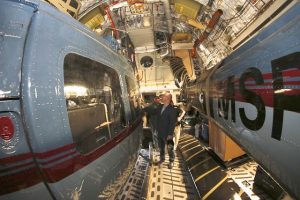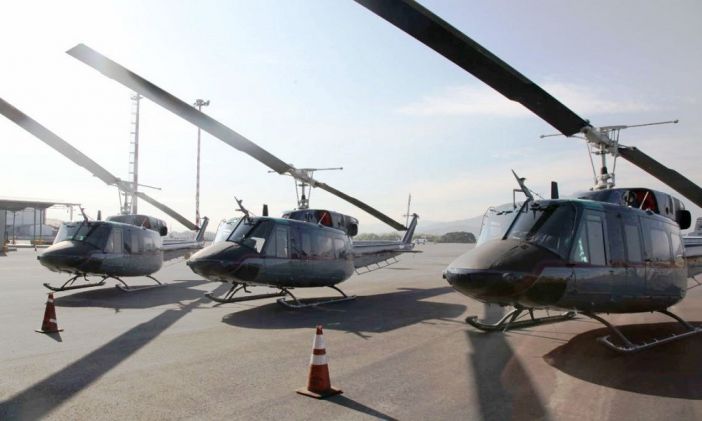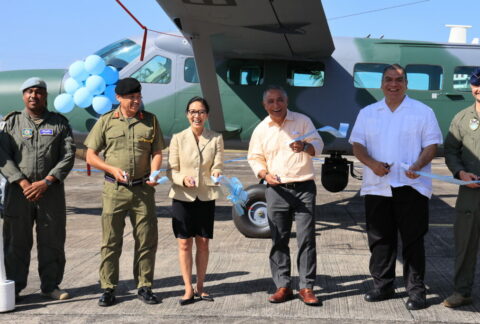The U.S. Department of State’s Bureau of International Narcotics and Law Enforcement (INL), through the U.S. Embassy in Costa Rica, donated four Bell UH-1ST helicopters to the Costa Rican Ministry of Public Security’s Air Vigilance Service (SVA, in Spanish), in the first half of 2019. The aircraft will extend by two more years the Air Training Program, which INL leads since 2009 to counter narcotrafficking and air and maritime criminal activities and to provide assistance in natural disasters and humanitarian crises.
“The helicopters will cover the whole territory and will combat narcotrafficking and transnational organized crime. These will also have the opportunity to offer services in emergencies and other situations,” Richard Glenn, INL Deputy Assistant Secretary of State, told the press. “Year after year, we see the efficiency with which they handle the tools and training that we provide. Costa Rica shares with the United States the willpower and sense of collective mission to confront regional problems.”
The U.S. investment is valued at $48 million and includes the four helicopters; their refurbishing, maintenance, and spare parts, in addition to training for SVA members. “The training program started with 25 SVA officers, including pilots, co-pilots, and maintenance and logistics technicians,” Captain Juan Luis Vargas, SVA commander, told Diálogo. “We will start a four-month module with the flight crews. When our crew is ready, we will begin executing operations to counter organized crime. The idea is for crews of both countries to merge during the missions.”
The program seeks to have SVA fully manage the units after the two years of training. “These capabilities will promote and strengthen state security institutions. We will count on support from both the U.S. and Colombian Armed Forces’ instructors,” said Major Patrick Beville, U.S. Air Force Foreign Affairs officer in Costa Rica.

The helicopters hold 15 people, three crew members and 12 passengers. They have two engines and can reach speeds of up to 127 miles per hour. With a load capacity of 7,303 pounds, they have a coverage range of 209 miles. Another advantage is that they can operate in mountainous terrain and variable conditions, ideal for the country’s geography.
“It’s a functional aircraft that will give us great autonomy; we won’t have to ask other countries for help, since its load cabin allows for two configurations: one to carry passengers, and another to transport up to a ton of cargo,” Capt. Vargas said. “If we have to provide emergency assistance, the cabin can become a medical area, where we can put up to six stretchers and arrange a space for medical personnel. They come equipped with cranes for vertical rescue or humanitarian airdrops.”
The aircraft cabins are armored on the sides and under the pilots’ seats. They also allow pilots to conduct instrument flights and use night goggles. With this technology, SVA will be able to execute strategies to counter organized crime together with the National Coast Guard Service and the National Police.
According to INL, Costa Rica ranked third in drug seizures among Latin American countries in 2018. “In 2018, we seized 33 tons of marijuana, and so far this year [2019], we’ve seized nine,” said Miguel Soto, Costa Rican minister of security. “As this is one of the first stops to smuggle U.S.-bound cocaine, we counter speedboats that operate hundreds of miles off the Pacific coast.”
Costa Rica is one of the main and strongest U.S. partners in the fight against transnational threats in the region. “For many years, our countries have been close operational and strategic partners in a variety of security cooperation activities,” said Hakim Hasan, information officer at the U.S. Embassy in Costa Rica. “With this combined work, our partnership transforms the country’s capabilities to secure its borders, improve security, and address the causes of crime.”









